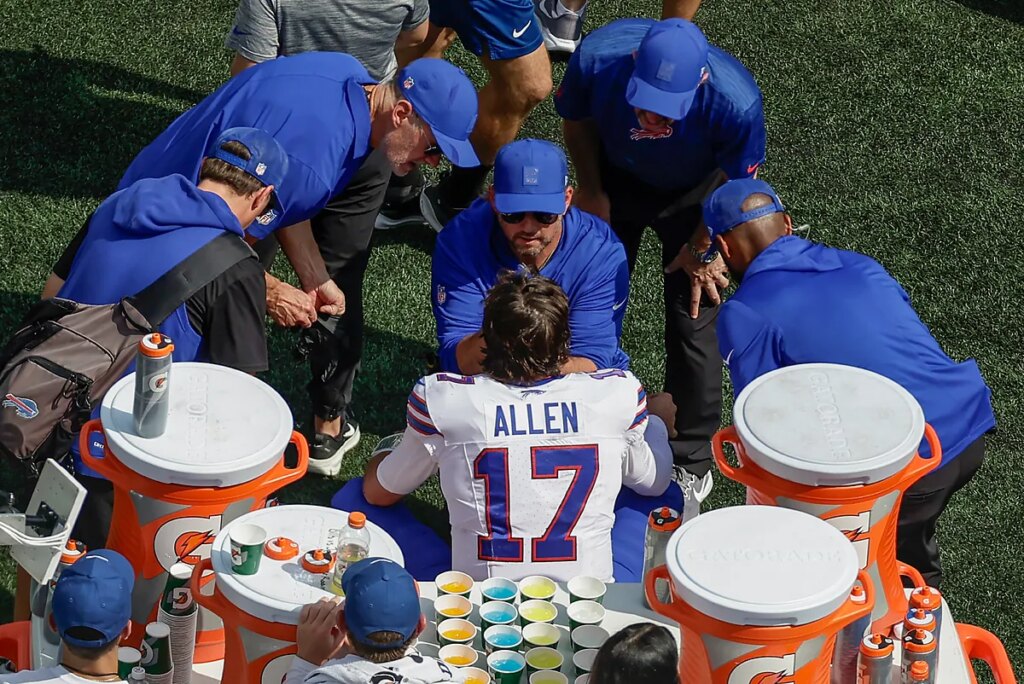Buffalo Bills quarterback Josh Allen had a rough moment early in their Week 2 matchup against the New York Jets after suffering a nasty-looking nose injury.
What began as alarm from fans and medical staff turned into determination, as Allen downplayed the damage and focused on leading his team.
Early in the first quarter, Allen took a hit up the middle. A Jets defender made contact with his face mask, leaving Allen bleeding heavily. He exited the field for a brief spell as medical personnel tended to the injury.
Backup quarterback Mitchell Trubisky stepped in during that short absence. But Allen was back shortly afterward, nostril bandaged, blood visible, but unbowed.
From injury scare to leadership statement
Allen’s response to the injury was swift and blunt. When asked about his status after the game, he said: “We can breathe, so it’s good.”
That statement came despite images and broadcast commentary describing Allen’s nose as “gushing blood” and “visibly swelling.”
CBS sideline reporter Tracy Wolfson reported Allen was “bleeding profusely with a team of doctors surrounding him.” Allen’s return to the field so quickly drew admiration: it underscored both his toughness and his willingness to lead under duress.
Statistically, the injury didn’t seem to halt the Bills’ momentum. Though Allen finished the game with just 148 passing yards and did not score a touchdown through the air or ground, the Bills dominated key phases of the game.
The offense leaned more heavily on the run and defensive stands. Matt Prater’s 52-yard field goal helped widen the gap once Allen was back, and the team maintained control for much of the game.
Nose injuries-especially when involving blood and swelling-can be deceptively serious in the NFL. Beyond superficial bleeding, there’s risk of fractures, sinus issues, and breathing impairment, all of which can affect performance.
NFL medical staff are trained to assess whether such injuries might exacerbate more serious damage, like a broken nose or septal problems. Optional protective gear like a visor or extra padding can mitigate future risk once treatment permits.
Will the injury keep him sidelined?
Allen’s case seems less severe than the optics suggested. He returned quickly and continued to perform, although visibly bleeding. He later noted swelling of the nose and acknowledged that medical staff managed to stop much of the bleeding.
Allen will likely receive X-rays or imaging to assess any structural damage, though his postgame comments suggest he expects to be available for upcoming matches.
The Bills’ win over the Jets was decisive, with a final score of 30-10. More than just a victory, Allen’s resilience sent a message: even when injured, he remains the backbone of the offense.
For a team with Super Bowl aspirations, durability and leadership matter just as much as statistical output. Even in this lower yardage passing game, Allen’s presence helped keep momentum, stability, and belief in the locker room.
In terms of injury management, this moment will force coaches and trainers to double down on protecting him. If Allen shows resilience this week’s rest, nothing changes immediately.
But if similar hits continue without caution, accumulated damage could become an issue as workloads increase late in the season.
Read the full article here

